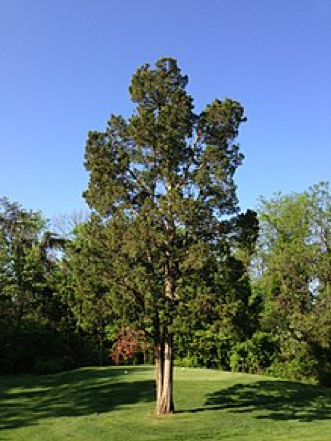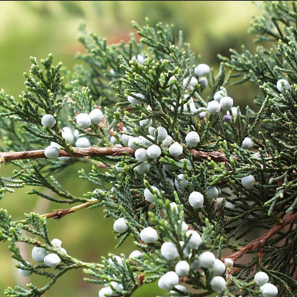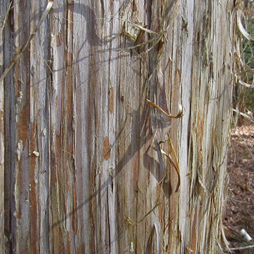
Eastern Red Cedar
Juniperus virginiana
Family: cupressaceae
Leaf Type: Evergreen
Mature Height: 6-15 m (~20-50 ft)
Fall Color: N/A
Native Range: Eastern red cedars are natively found throughout the Midwest to much of the East coast with a variant that extends to most of Florida.

Features
The leaves of Eastern red cedars are different than deciduous trees and look more similar to pines and firs, especially on younger trees. On mature trees, the leaves are pressed, scale-like, and dark green. In the winter, some leaves may be a reddish-brown color. Eastern red cedars are non-flowering trees that produce seed cones. These seed cones are small and light blue, resembling berries. We recommend not sampling the fruits & nuts of the trees and plants here at Adventure Science Center. The bark is very distinctive on mature Eastern red cedars. It is reddish-brown and exfoliates, or peels, in thin strips.

Fun Facts
● This tree gets its name from the reddish hue of the wood.
● The Eastern red cedar is the state evergreen of Tennessee. Evergreen means it does not lose its leaves in winter.
● The small, light blue seed cones of the Eastern red cedar resemble berries and can be used to make gin.
● Cedar wood is commonly used for closet lining and chests.
“If Trees Could Sing” is a project of The Nature Conservancy that highlights several recording artists and demonstrates the importance of trees. Check out what Mike Farris has to say about Eastern red cedars.
Aprende más

Did you know that trees provide homes for animals, keep us cool and clean our air? Click here to learn more about the benefits that trees provide to us and our world.

